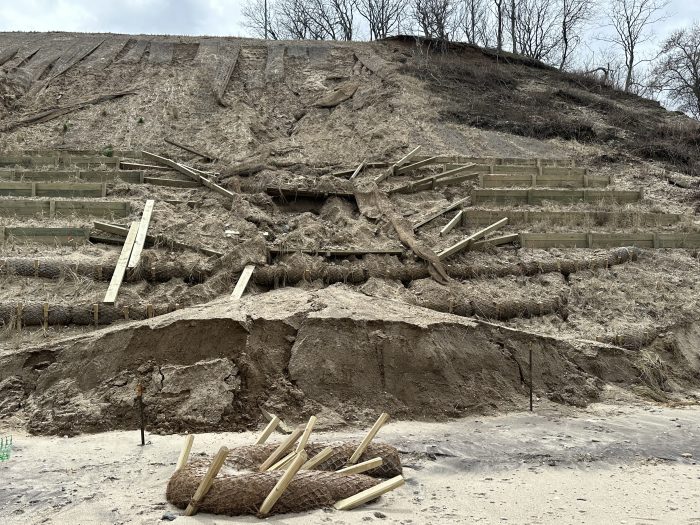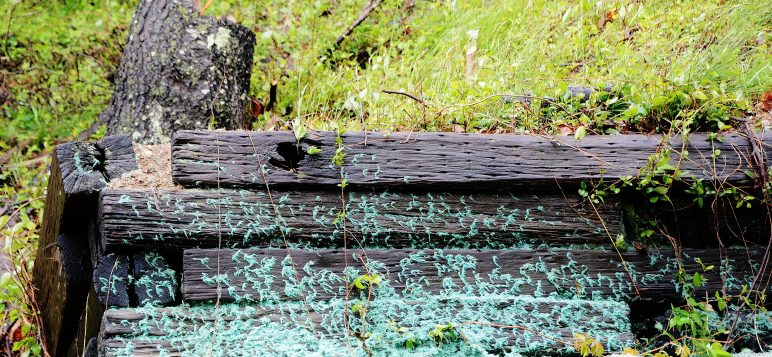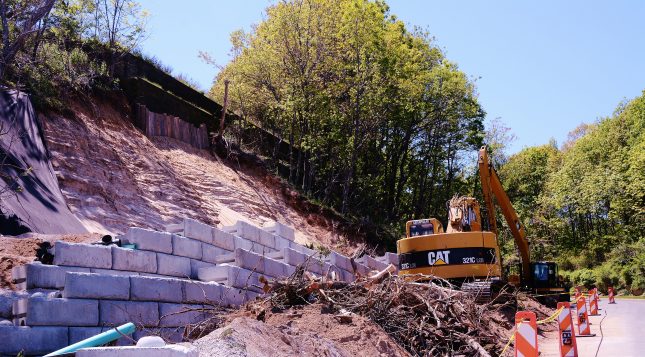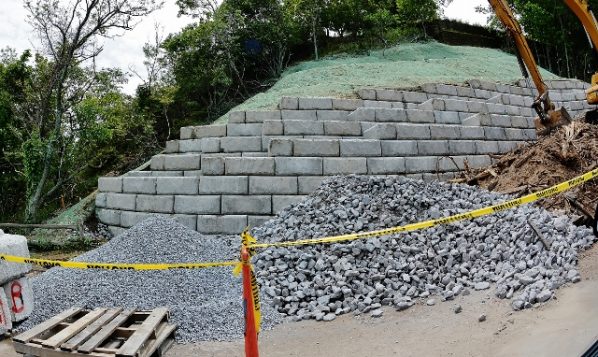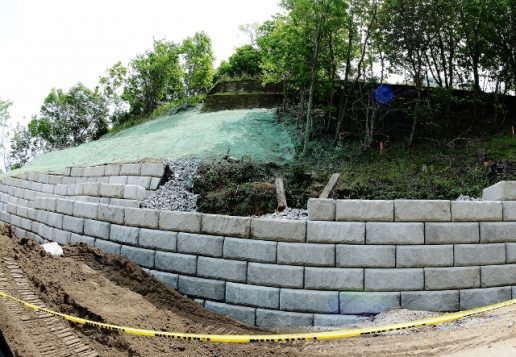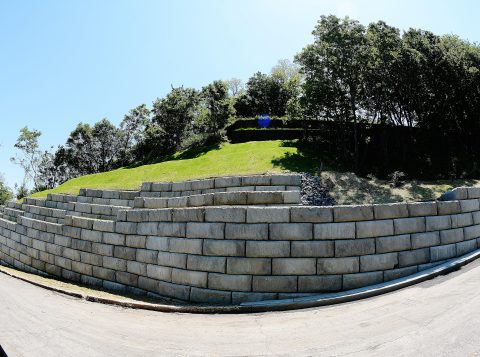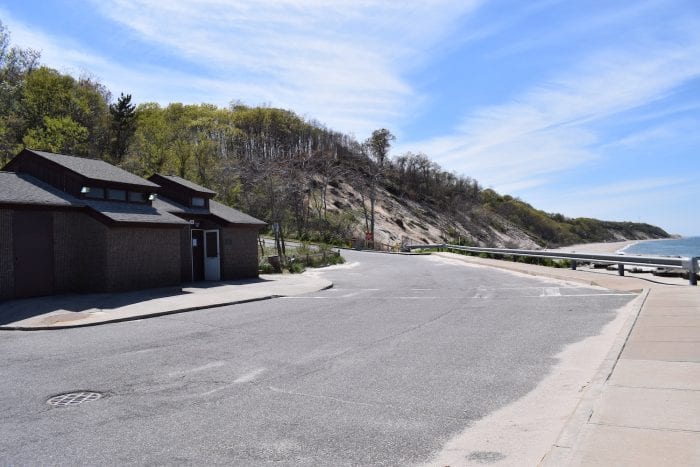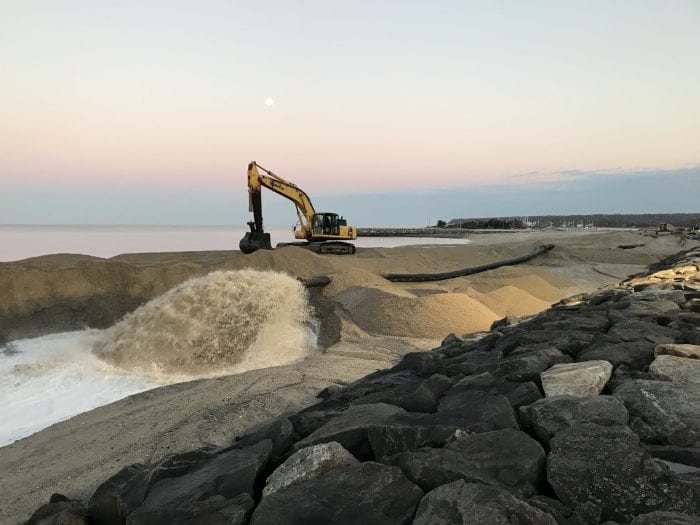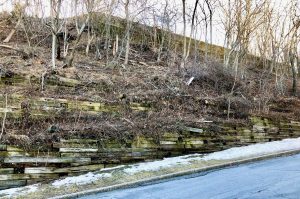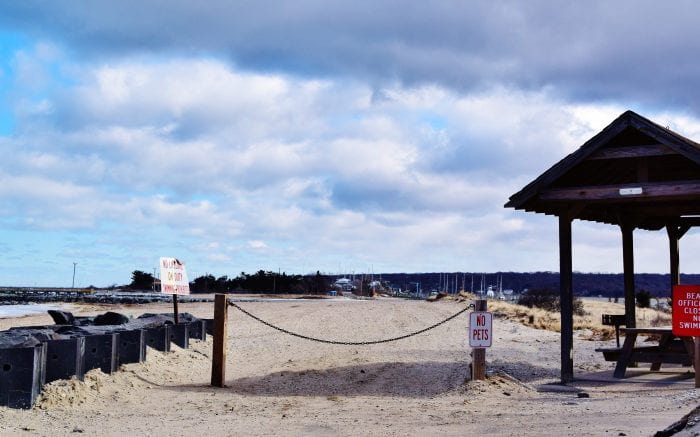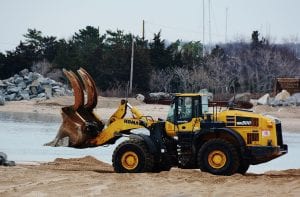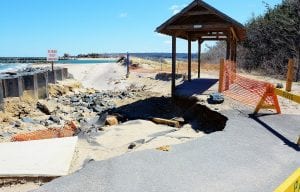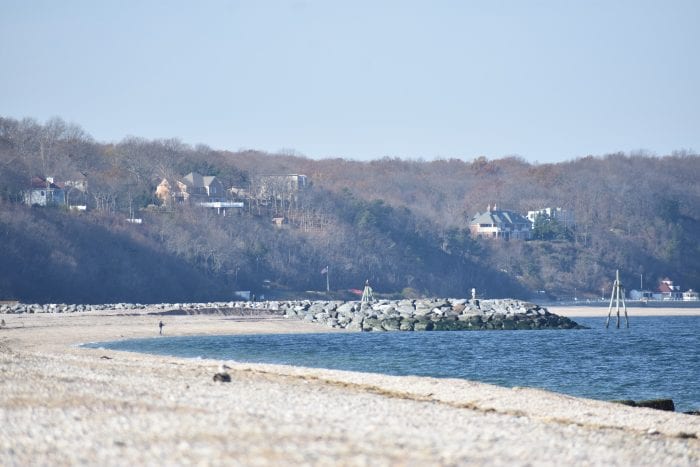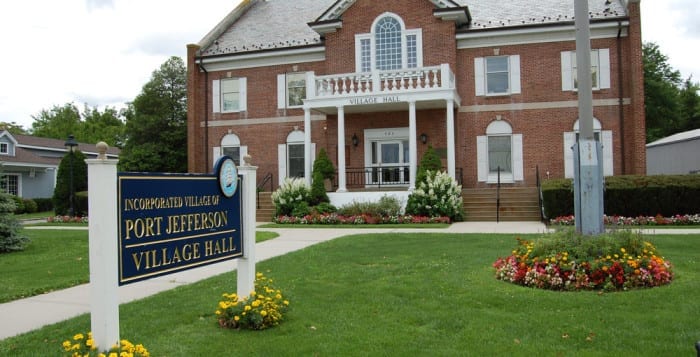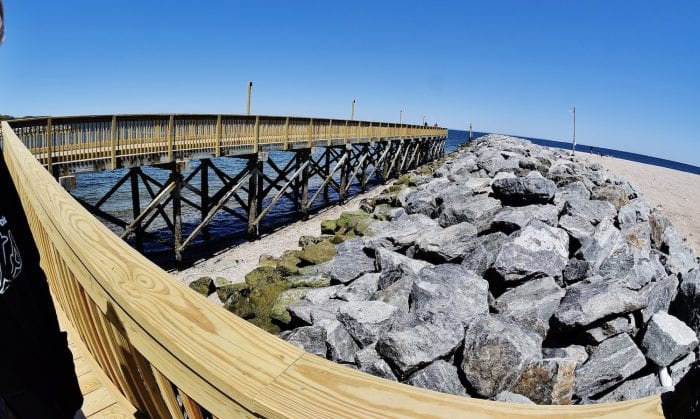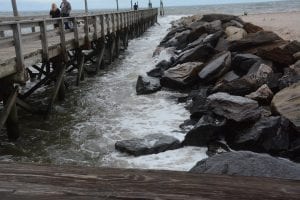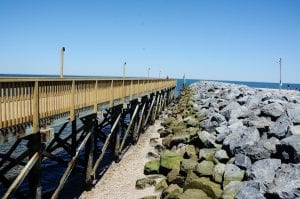Recent setbacks in East Beach bluff stabilization project have officials and residents on edge
By Lynn Hallarman
East Beach is a village-owned strip of sandy shoreline situated between the northern front of the Long Island Sound and the base — or toe — of a steeply set bluff, roughly 100 feet high.
A jetty opens into Mount Sinai Harbor eastward of the bluff. To the west, the shore stretches past a series of private properties, then past the village of Belle Terre, and finally curves inward, reconfiguring as Port Jefferson Harbor.
For decades, the village-owned Port Jefferson Country Club, perched near the crest of the bluff, was invisible to beachgoers below, shielded by a thick tangle of greenery clinging to the bluff’s north front.
But in recent years, a series of intense rainstorms, combined with sea rise and pressures from human-made alterations in the landscape above the bluff, have set in motion deforestation and scouring, denuding the bluff of vegetation and accelerating erosion in the direction of the country club’s foundation. The club has become precariously close to the bluff’s edge. Without a plan, there was no doubt it would slide down the bluff onto the shoreline below within a few years.
To make matters worse, the bluff stabilization project, whose aim is to stabilize the position of the club, has been beset with complications in the wake of a series of recent storms unraveling costly work completed just last summer as part of Phase I of the project.
As communities across Long Island are confronting relentless coastal erosion, TBR News Media focuses on the obstacles facing the bluff stabilization project at East Beach, exploring the complexities, costs and alternative solutions to rescuing the country club.
The big picture
Bluffs change naturally over time, feeding sand to the beach and replenishing the shoreline. They respond to the force of winds, waves and tides, creating new states of equilibrium with the beach below and the landscapes above. The Long Island shoreline has been reshaping for thousands of years, sometimes imperceptibly and sometimes in dramatic fits of landslip — that is, chunks of shoreline abruptly falling into the sea.
East Beach and its bluff are inseparable from the adjacent coastline — they move as the coastline moves. When humans make changes in the shorelines by adding bulkheads, jetties and other rigid structures, the effects resonate laterally, affecting the movement of sand and ocean from beach to beach along the shoreline.
“Port Jefferson’s experience with bluff restoration is a microcosm of what has been happening all over Long Island,” said Chuck Hamilton, a marine biologist and former regional natural resource supervisor for the state Department of Environmental Conservation for some 33 years.
“For a long time, farmers on Long Island had their farms right on top of the bluff, and shoreline erosion happened naturally,” he said. But now those same areas are being subdivided and developed, adding weight and impermeable surfaces abutting the shoreline. “And guess what? Now we need to stabilize.”
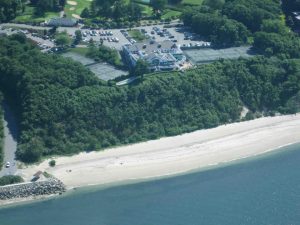
The project
When Port Jefferson’s mayor, Lauren Sheprow, took office in July 2023, the bluff stabilization project was already in motion. Sheprow, a former public relations professional, had campaigned on a platform of two core values: financial transparency and safeguarding of village assets. However, the realities of rescuing the country club — purchased in 1978 when her father, Harold Sheprow, was village mayor — while keeping project costs under control have proven to be complex and demanding.
Most of Phase I of the project happened before the current mayor took office. This work included the installation of a 454-foot rigid wall at the base, terracing and native grass plantings on the bluff face. With Phase II now under her purview, Sheprow believes it is her responsibility to see the project to completion: the installation of a wall system along the bluff’s crest, directly seaward of the imperiled country club.
“I swore to protect and preserve the property owned by the Village of Port Jefferson, and therefore the residents. Preserving and protecting is not ignoring an erosion issue,” the mayor said.
Phase I, costing approximately $5 million, relied on local taxpayer dollars financed through a bond repayable over time. Phase II, estimated at $4.8 million, will be financed mostly by federal taxpayer dollars by a FEMA grant of $3.75 million.
Financing the endeavor has been rife with holdups and stymied by a six-year-long permitting process. It has been almost a year since Phase I was completed. Final signoffs related to the FEMA funding for Phase II are still pending, preventing the village from seeking bids for construction of the upper wall. However, the village treasurer, Stephen Gaffga, said he hopes to see the signoffs come through this month.
By many accounts, questions about the project’s funding have rankled residents for years. The prevailing sentiment is that the village pushed through a $10 million bond for the stabilization project (phases I and II combined) without a community vote through a bond resolution.
“When I am asked about my position about the bluff restoration, I never saw the arguments on all sides of the project flushed out,” said Ana Hozyainova, president of Port Jefferson Civic Association. “Village officials took the position from the beginning that the building must be saved, no matter what. That imperative has limited the discussions about options.”
Complications
The uncertainty surrounding the cost and timing of needed repairs because of winter storm damage to the bluff faces further complications in Phase II. “Negotiations are ongoing” between the village and the contractor about who is responsible for absorbing these additional expenses, Gaffga said.
Drainage issues at the bluff’s crest are also hampering progress, and likely contributed to the recent collapse of the newly-installed terracing along the western part of the bluff, below the tennis courts. “There are huge puddles sitting at the crest, after heavy [recent] rainstorms,” Sheprow said. The strategy and cost related to addressing the drainage issues have not yet been determined, she added.
Although the project was divided into two phases because of funding constraints, “its ultimate success,” according to Laura Schwanof, senior ecologist at GEI Consultants of Huntington Station, “hinges on both walls working together to curtail erosion and prevent the club slipping down the slope.”
GEI has been involved with village erosion mitigation projects since 2009. The two-wall system for the bluff stabilization was their design. “The problem with this project is protection number two — the upper wall — has not been installed,” Schwanof said. When asked how long the wall system might hold up, she couldn’t say.
“What does happen, and has been seen across the Northeast, is that as we get more frequent storms, higher wave energy, higher rainfall events, rigid wall structures may work in the short term. But if you look 50 years down the road, they may not be as effective,” she said.
“Hard erosion protection structures such as revetments or bulkheads can be costly, only partially effective over time and may even deflect wave energy onto adjacent properties.” Jeff Wernick, a DEC representative, wrote in an email. The DEC, he said, permitted the East Beach project based solely on “the immediate threat to significant infrastructure.”

Photo from the PJ Village website
Retreat?
When Steve Englebright, 5th District county legislator (D-Setauket) and geologist, was asked about the stabilization project, he started with a lesson about glacial formations dating back 17,000 years. Englebright scrutinized photographs of the bluff during an interview with TBR News conducted after the recent storms.
“When the bluff, which is partially made of clay, is overweighted it behaves like squeezed toothpaste,” he said. “You can see toothpaste-like extrusions on the beach.”
Missing from the conversation, according to Englebright, is a reckoning of what is happening along the entire Long Island coast. “People don’t understand the overall dynamics,” he said. “That’s why I’m trying to give you the big picture — that the entire North Shore is unstable.”
“Trying to defend a single property is human folly,” he added. “You can buy some time, but how much are we paying? I don’t believe it’s realistic because you can’t stop the overall dynamic. The village should celebrate the fact that they have the ability to retreat and use that ability. Right? The bind is if you don’t have land, but they have the land. Strategically retreat, rebuild the building.”
Stan Loucks, a village trustee and a former country club liaison, was asked to put together a retreat plan by former Mayor Margot Garant — confirmed by her to TBR News. “I did a plan A — proceed with the restoration project — or plan B, retreat —about three years ago,” Loucks said. “I got prices for the demolition of the country club, moving the tennis courts and an architectural rendering of a new club further inland.”
“The drawings had a huge deck on this side overlooking the Sound, and the huge deck on this side overlooking the golf course. I would have loved to take that plan to the end,” he added.
Loucks’s retreat plan was never vetted publicly. Sheprow told TBR she never saw a retreat plan.
Loucks remembers when tennis court No. 5 went in a landslide a few years ago. “It was massive and happened overnight,” he said. “And the slide took the gazebo, too.”

